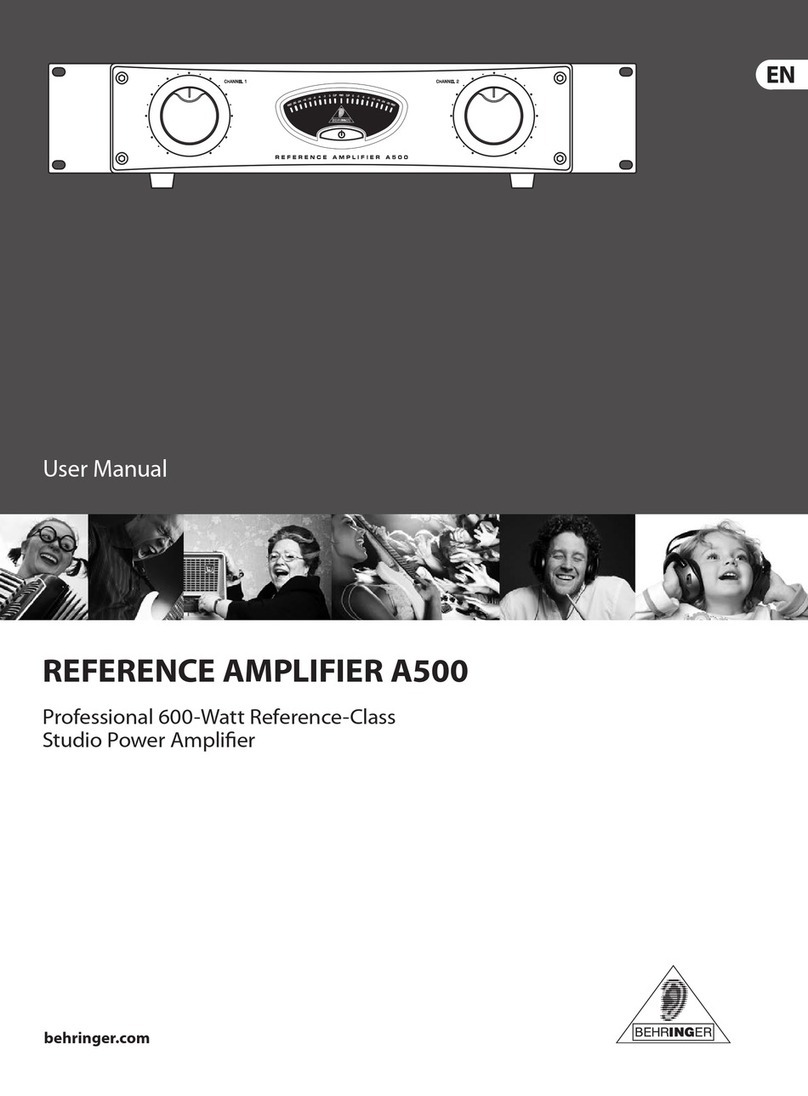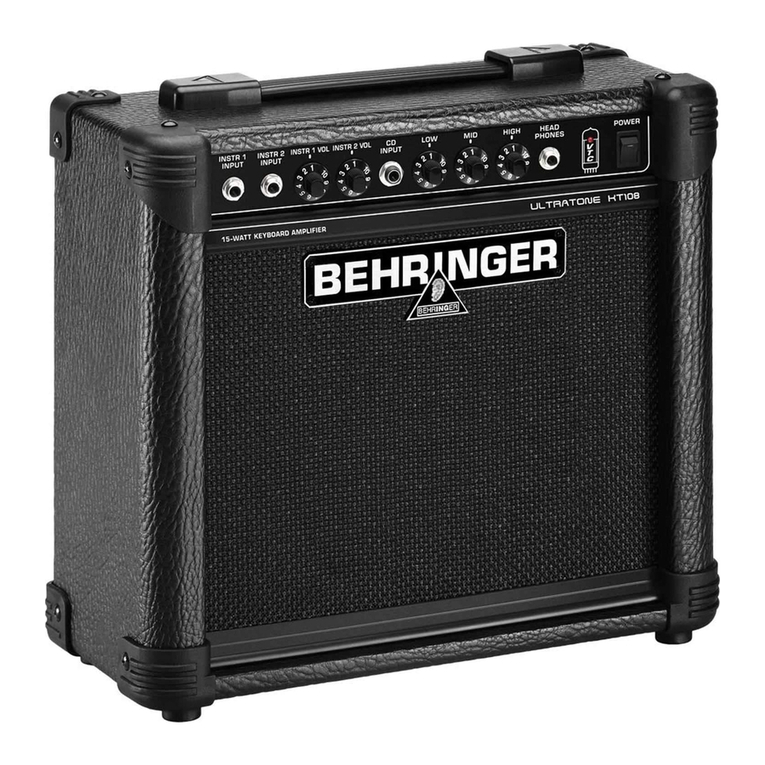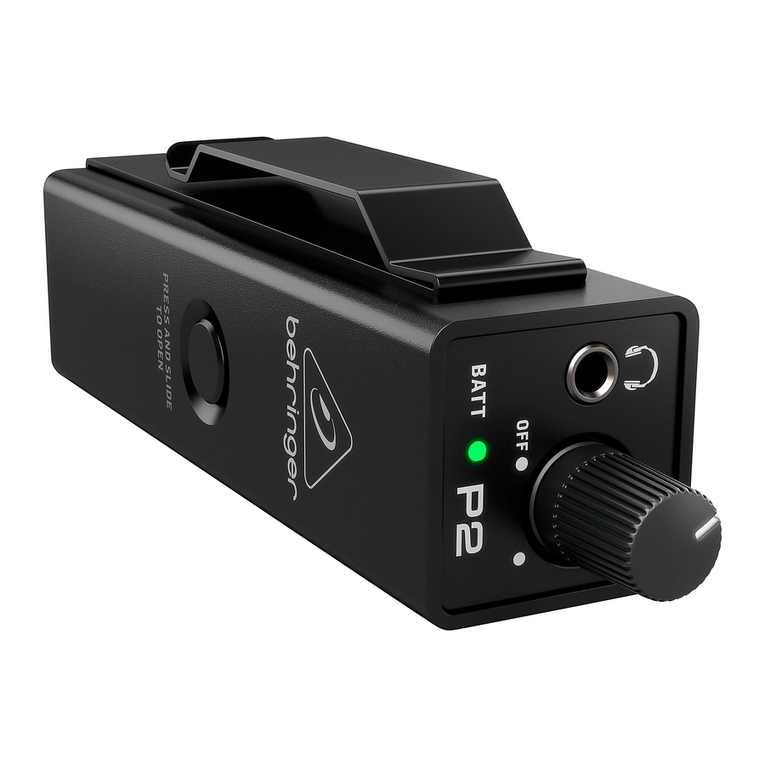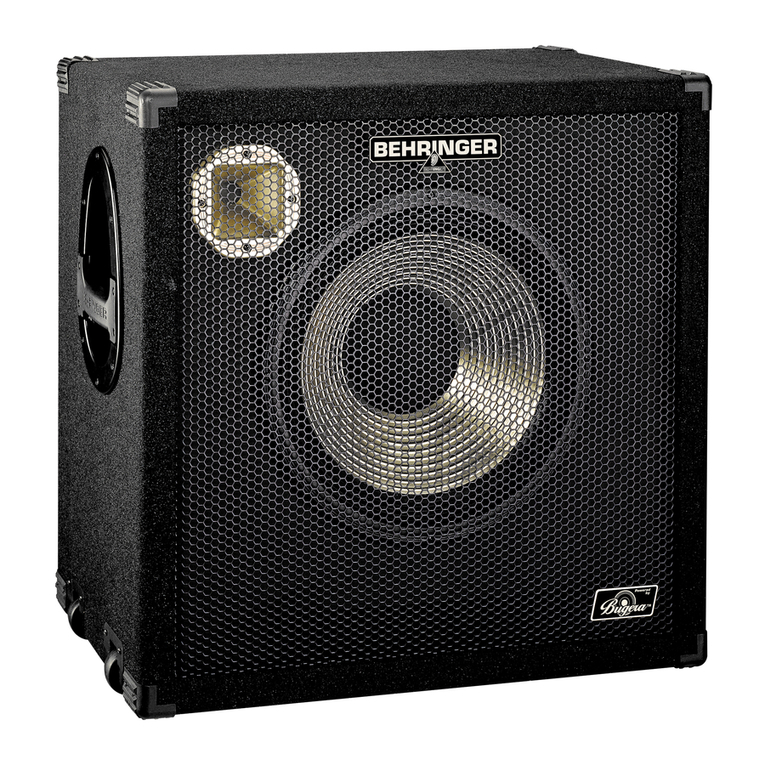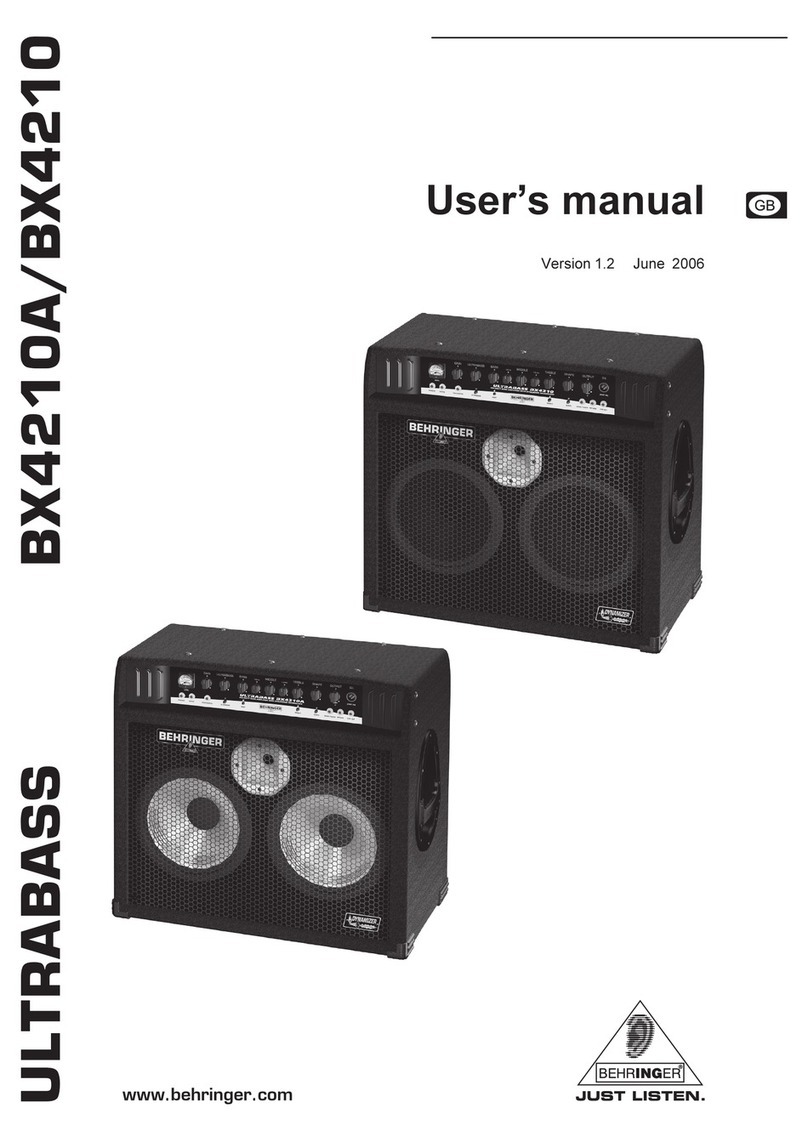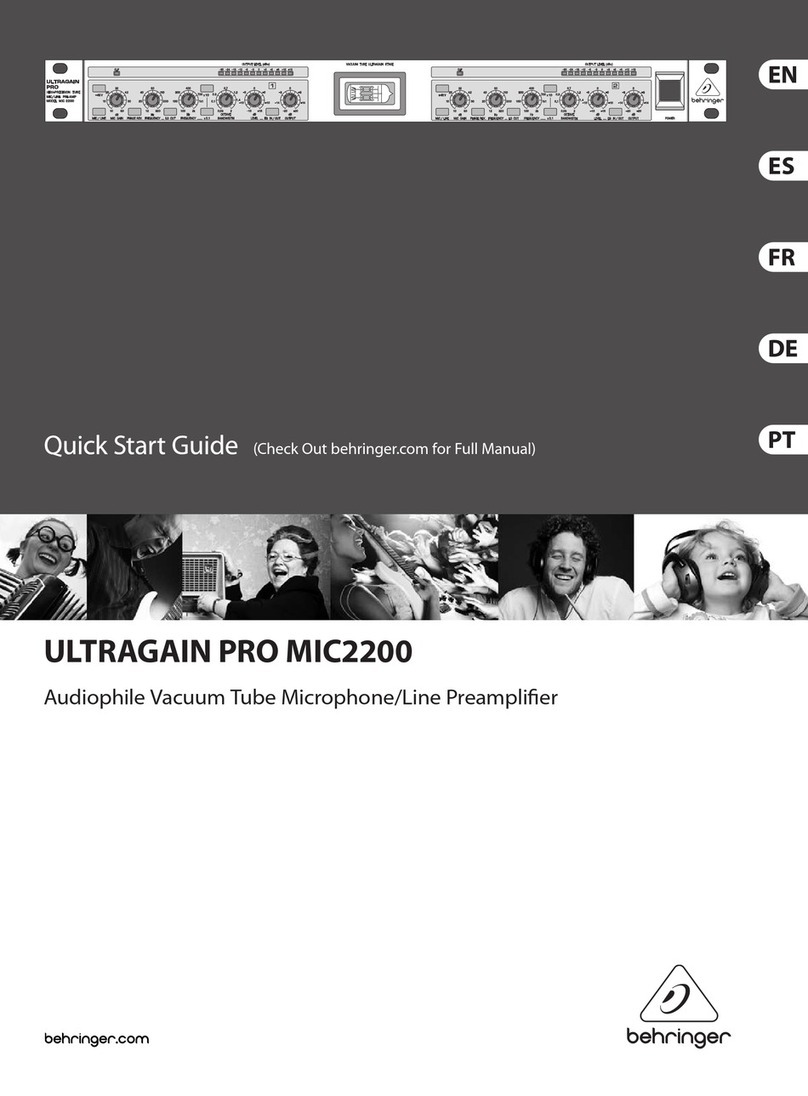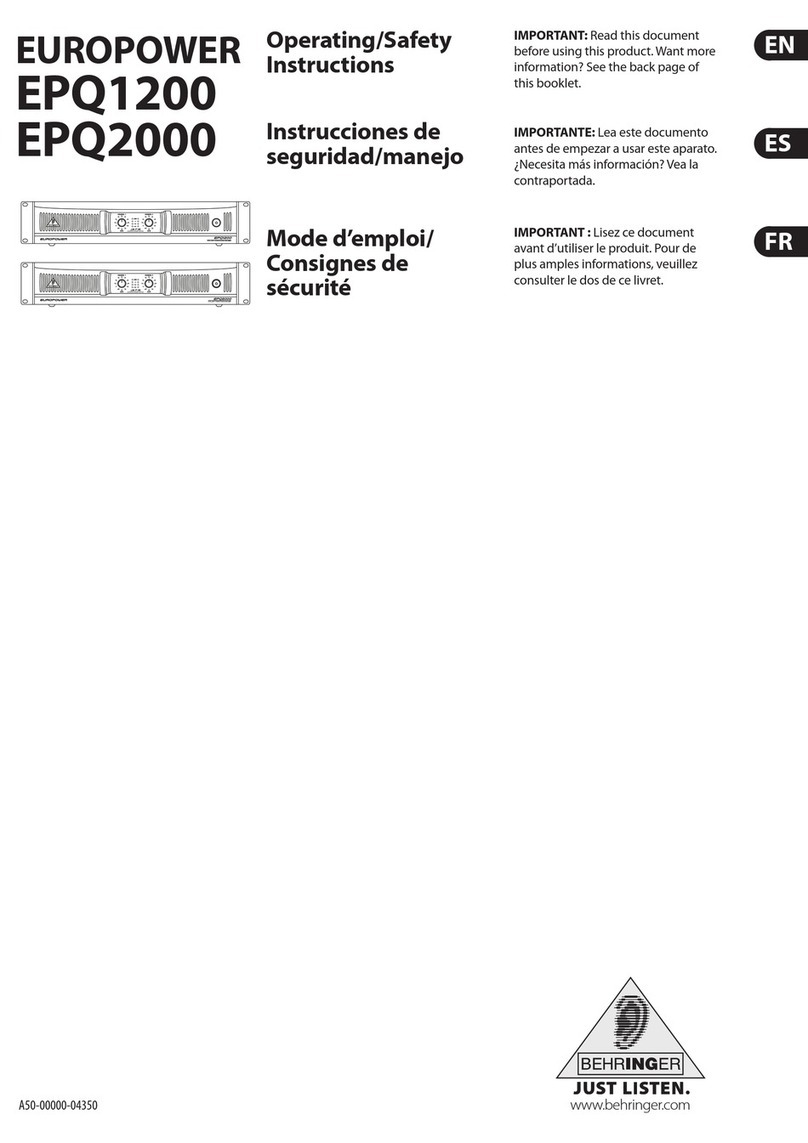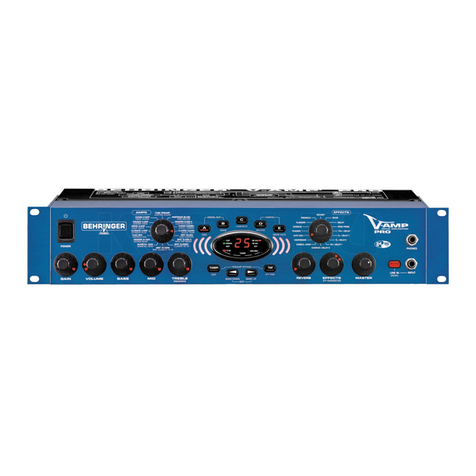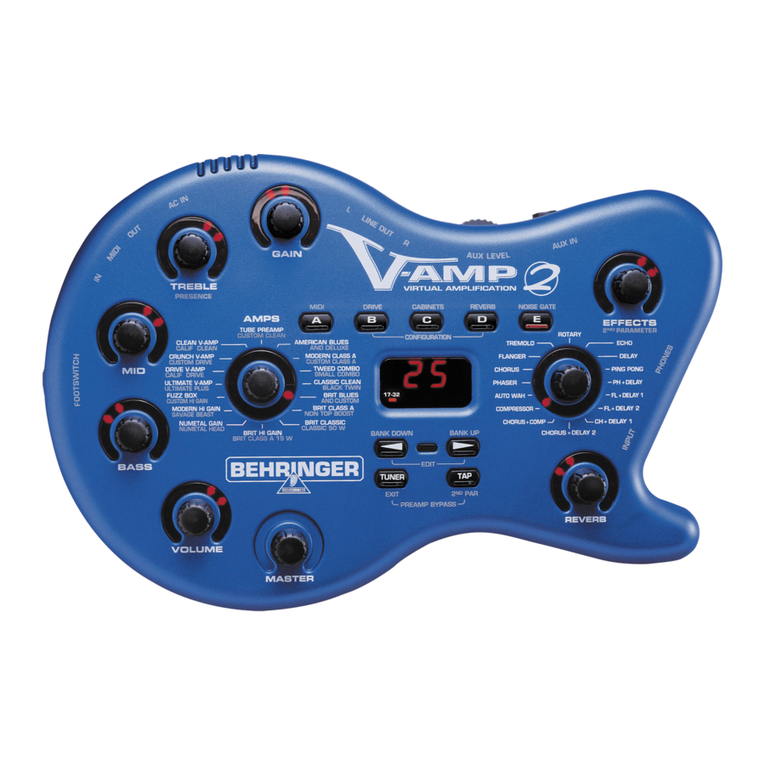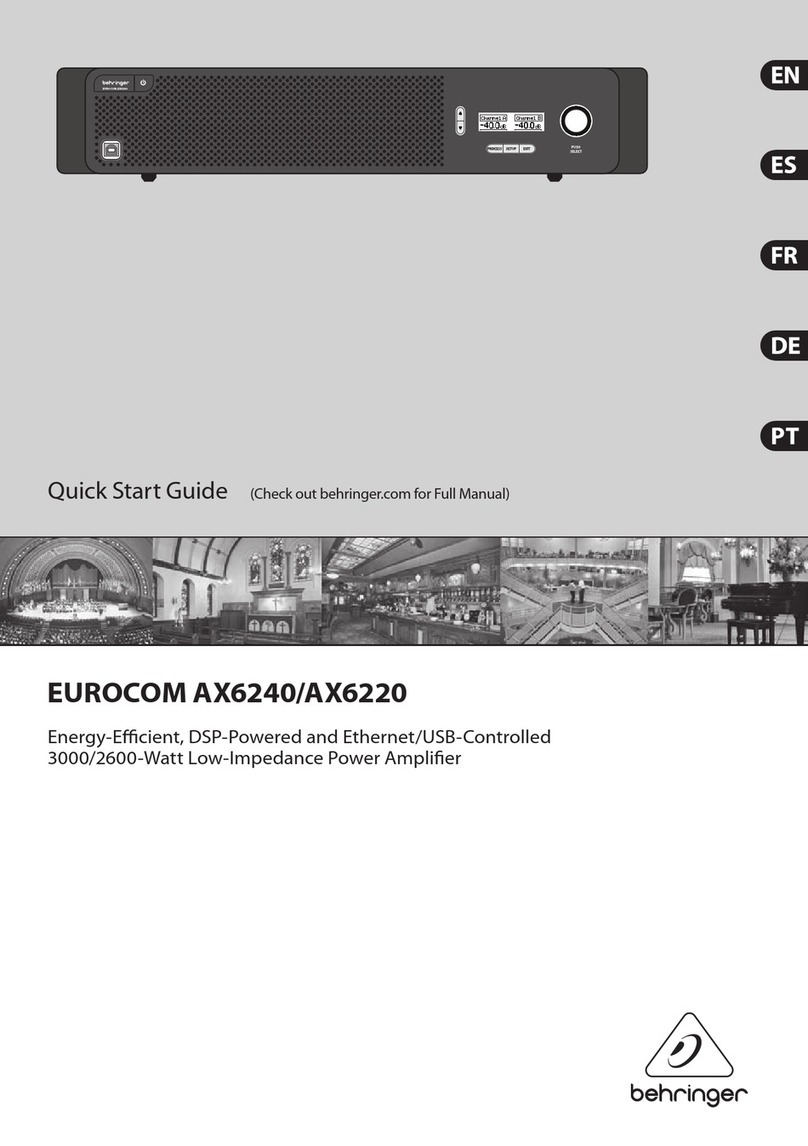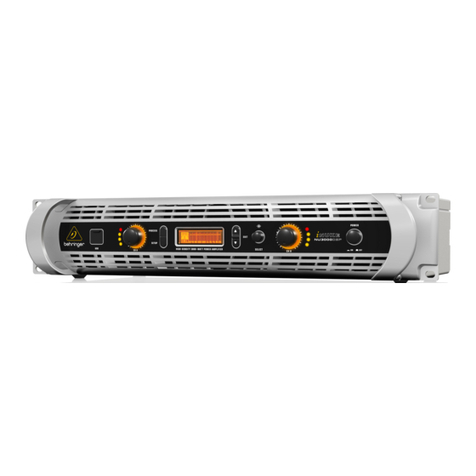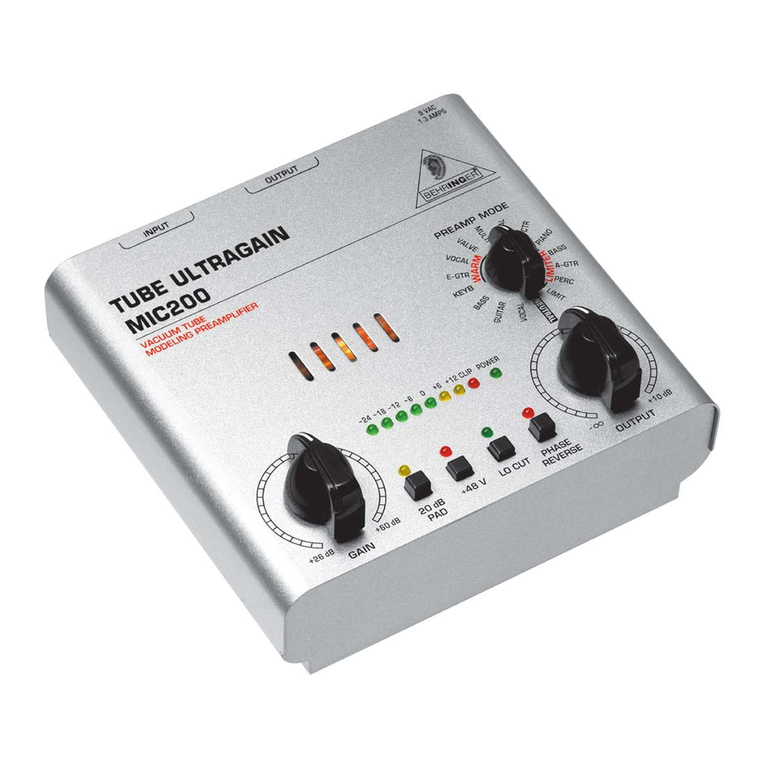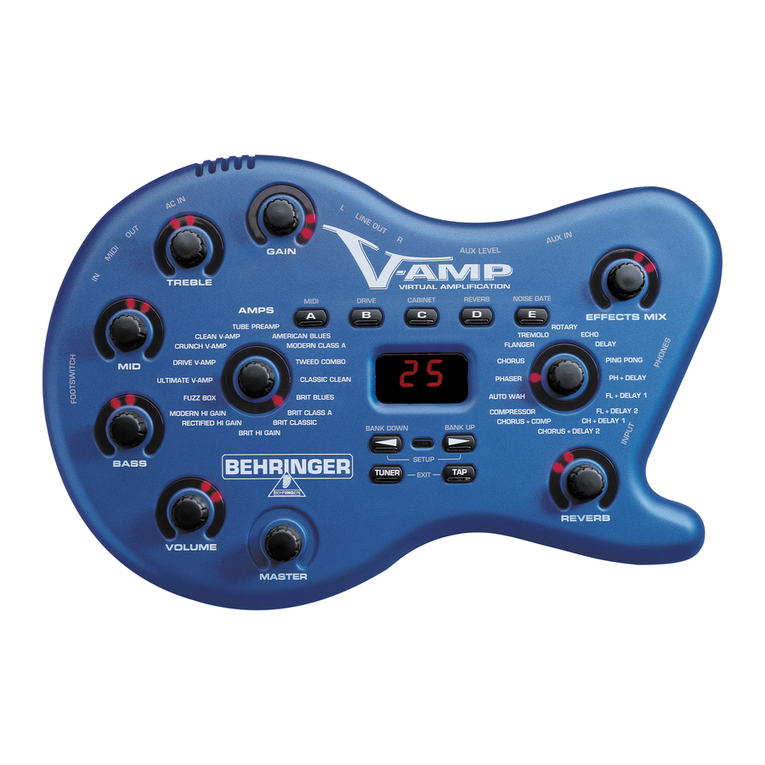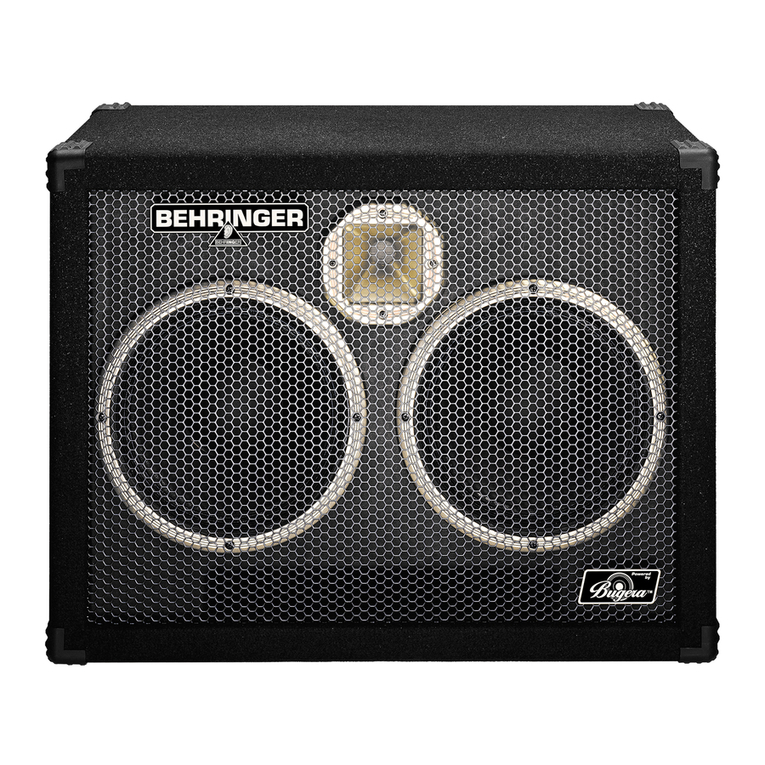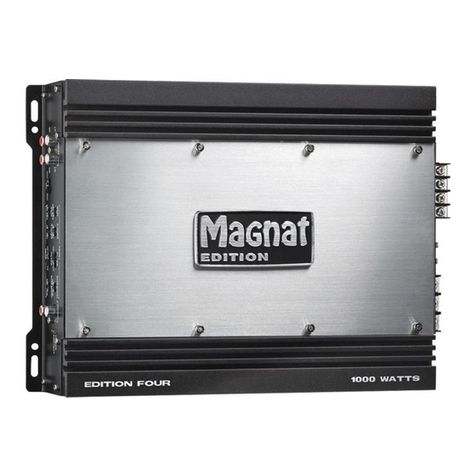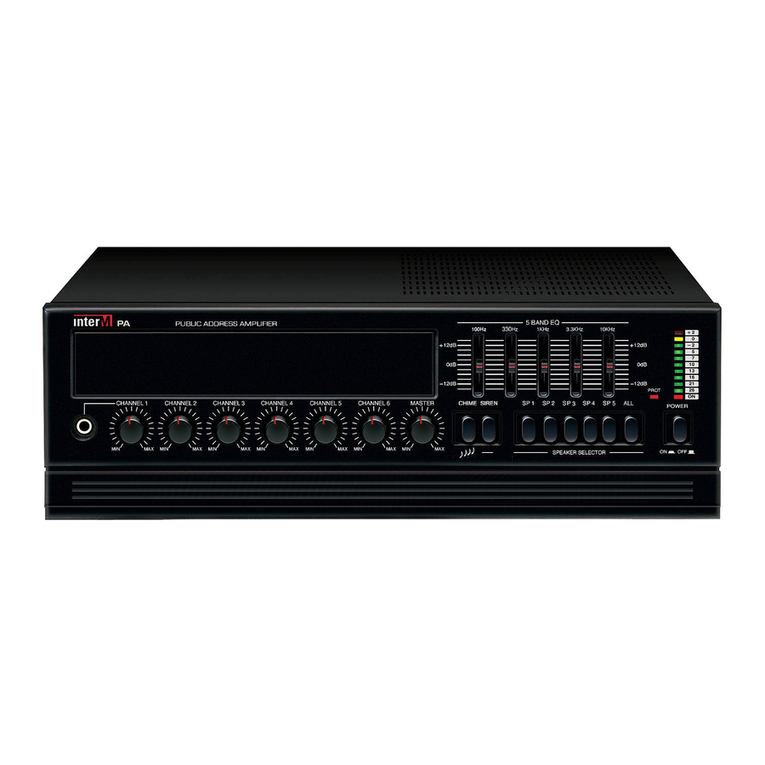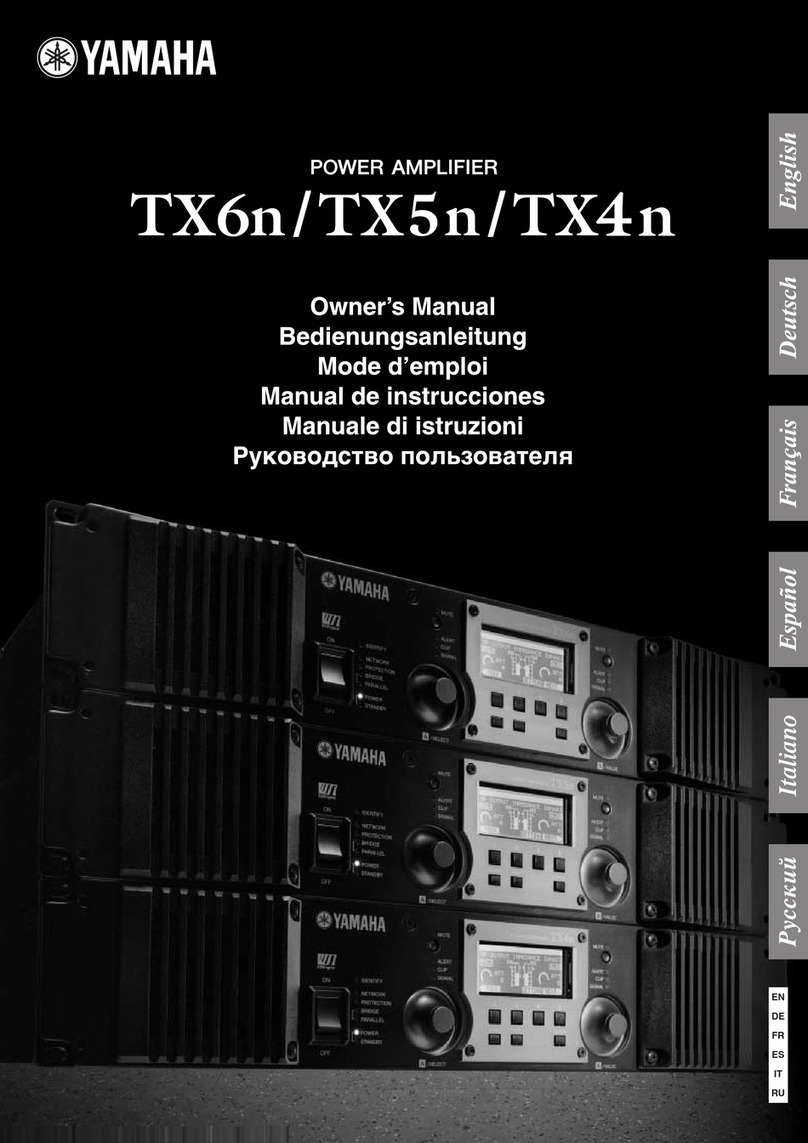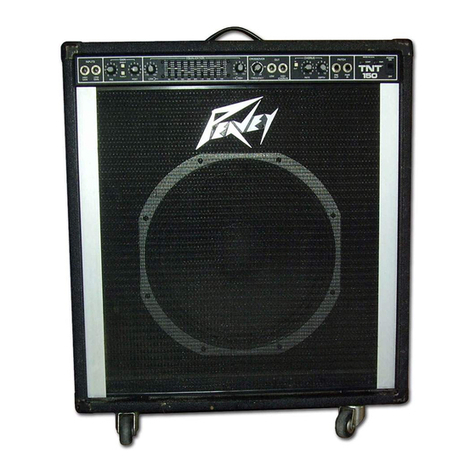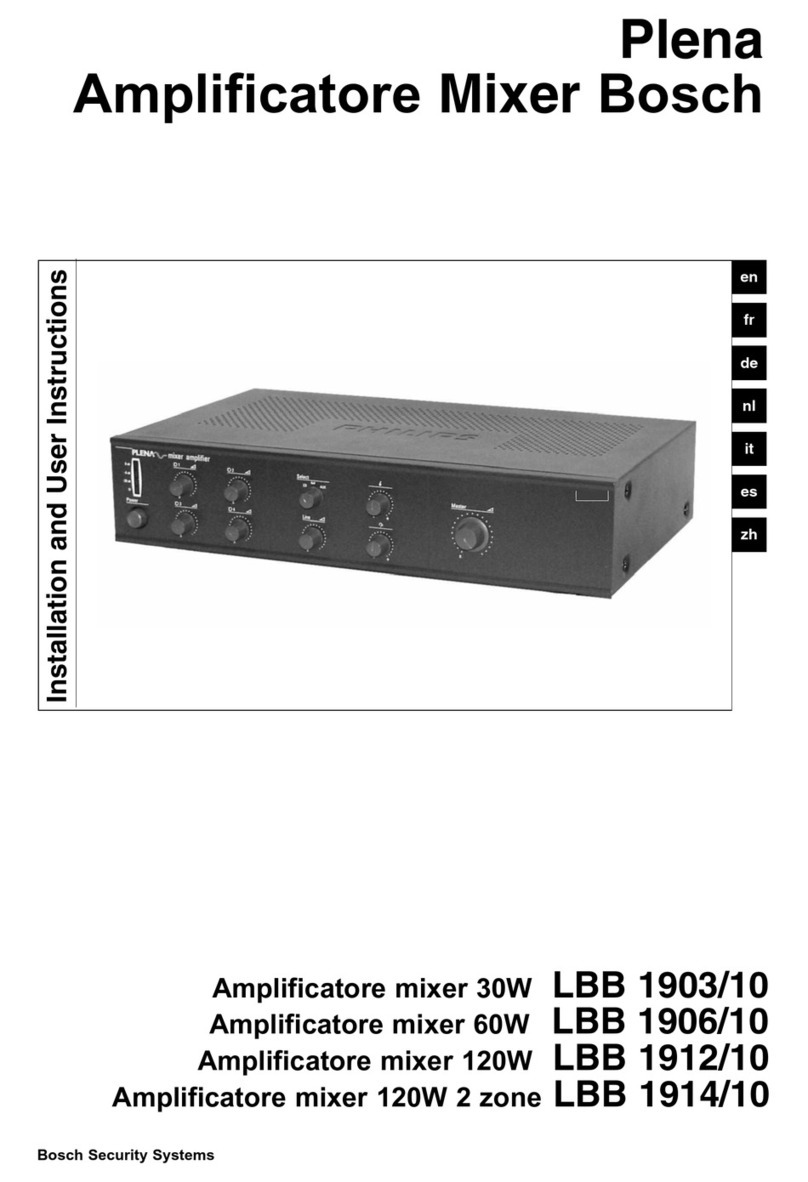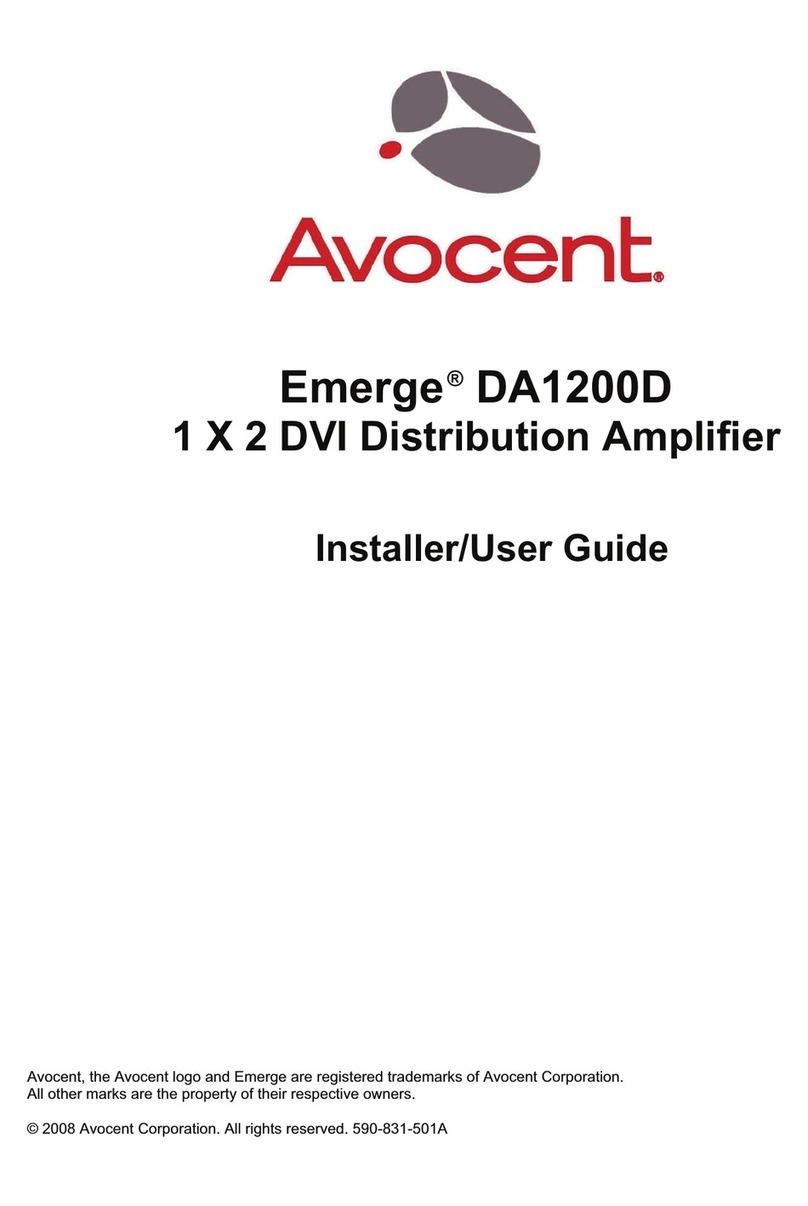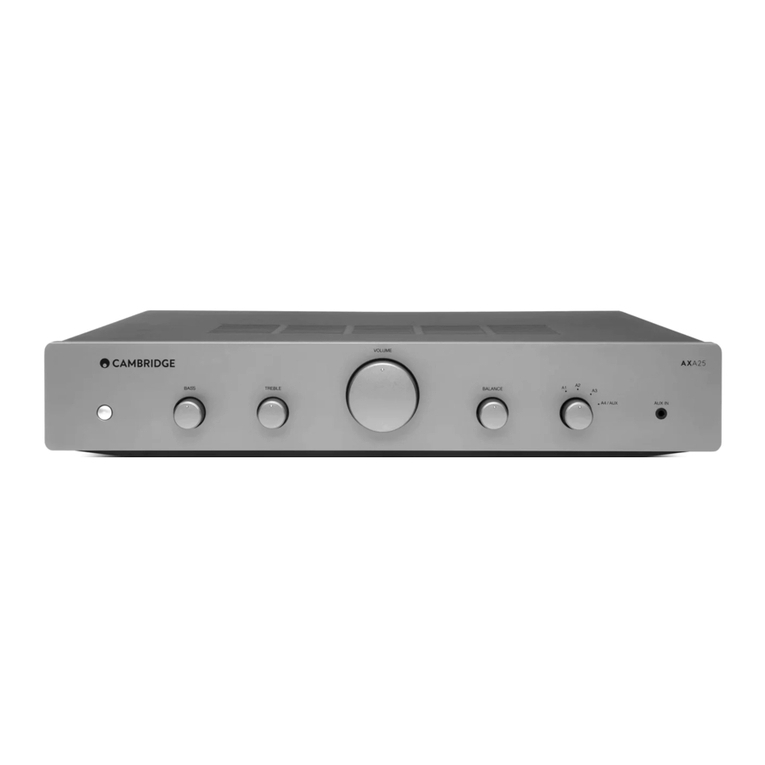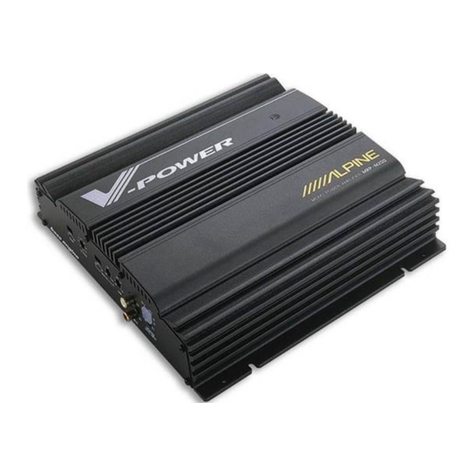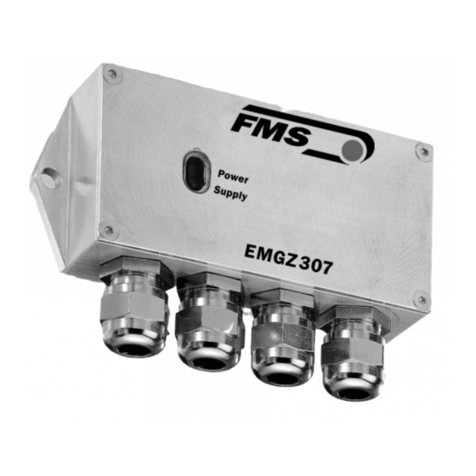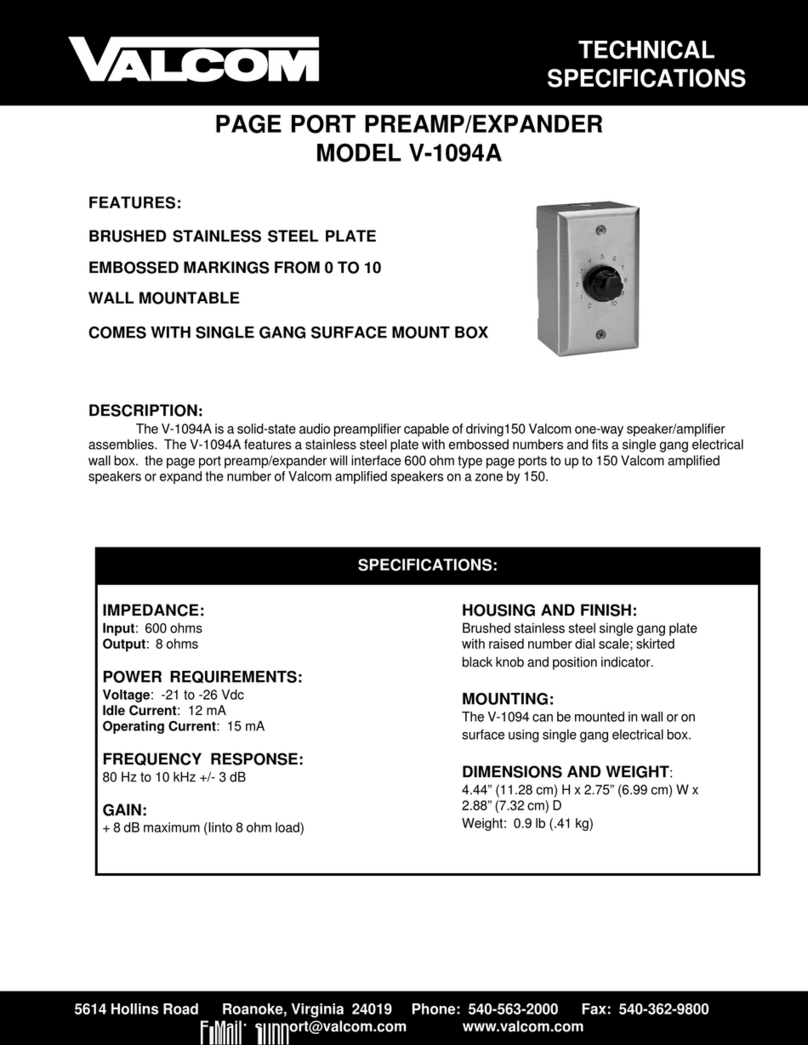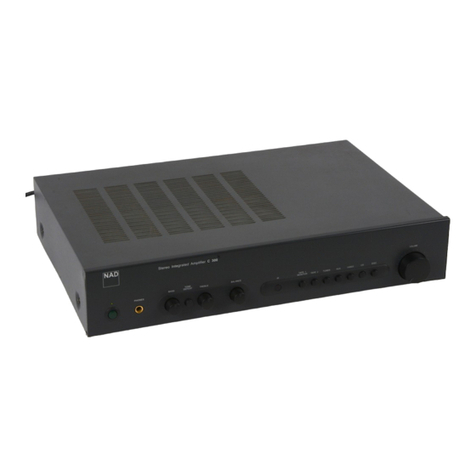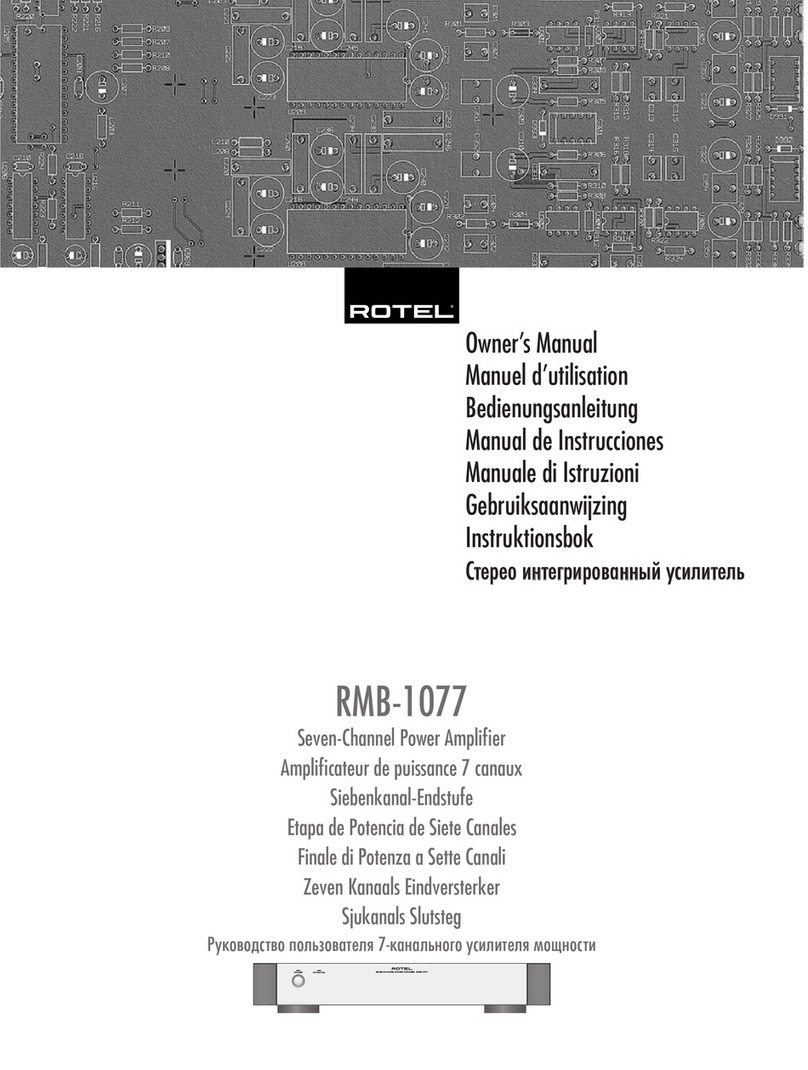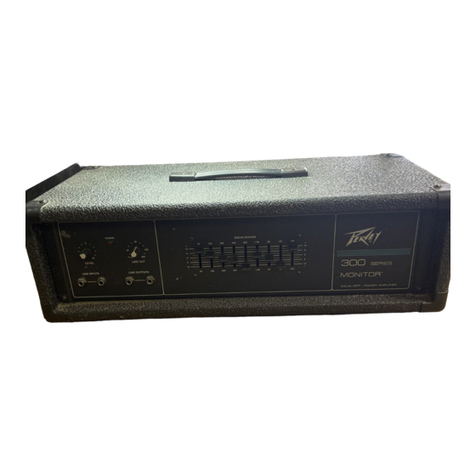7
V-AMPIRE/V-AMP PRO/V-AMP 2
2. CONTROL ELEMENTS
The LINE IN (V-AMP PRO only) switch determines which
signal source is processed by the V-AMP PRO, either
(switch not pressed) the signal applied at the high-
impedance INPUT jack, for example, your guitar, or (switch
pressed) the line signal connected to the PRE DSP INSERT
(LINE IN, ).
The stereo PHONES jack allows you to monitor the audio
signal with standard headphones (e.g. BEHRINGER HP
series).
+Y ur V-AMPIRE/V-AMP PRO/V-AMP 2 aut matically
activates studi m de 1 (S1) when c nnecting
headph nes. In this m de the digital speaker
simulati ns are activated. With the headph nes
plugged in, y u are able t select any ther
c nfigurati n, e.g. f r m nit ring purp ses (see
als chapter 3).
+If y u did n t ch se a speaker simulati n with the
current setting and c nnect headph nes, the device
will aut matically switch t a speaker simulati n.
This will increase the listeners s und impressi n.
Please refer t table 5.2 f r detailed inf rmati n n
the vari us speaker/amp c mbinati ns. H wever,
y u can intenti nally change r deactivate the
simulati n when using headph nes by selecting
- in the CABINETS m de (see C).
2.2 Rear panel/side
Both V-AMPIRE and V-AMP PRO feature a serial insert
path for external effects, such as a Wah-Wah pedal.
Connect the SEND/LINE OUT jack to the input of your
effects device. The SEND/LINE OUT output is taken directly
pre-digital processor (PRE DSP), which means you can
use this jack also to record a dry direct signal without
any effect added. Connect the RETURN/LINE IN jack to
the output of your external effects device.
+When using the serial insert path, please d n t
set the effects device t 100% effects signal (wet);
therwise, the direct signal will be missing.
+Press the LINE IN key t r ute the signal applied
at the RETURN/LINE IN t the V-AMP PRO. This functi n
is useful, f r example, t m nit r a dry guitar
signal with the V-AMP PRO bef re adding any
effects.
+As s n as the VAMPIREs LINE IN (Return) is
c nnected, the signal is aut matically r uted t the
DSP. The input signal fr m the fr nt will then be
interrupted.
The ANALOG LINE OUTPUTS provide the stereo signal
without analog speaker simulation applied (V-AMPIRE and
V-AMP PRO only). Use these jacks, for example, to connect
an external amp on stage.
The balanced LINE OUTs of the V-AMP 2 provide a stereo
signal, e.g. for recording applications.
+Y u may use balanced r unbalanced plugs with
the LINE OUTs.
Connect the POST DSP INSERT RETURN (IN) pair of
stereo 1/4" jacks to the outputs of your external stereo
effects device and use this path to return the signal sent
out from the POST DSP SEND (OUT) outputs .
The GROUND LIFT switch disconnects (switch pressed)
the ground connection at the DI OUT outputs to
effectively eliminate hum noise resulting from ground loops.
The DI OUT output provides the balanced stereo signal of
your V-AMPIRE/V-AMP PRO. Connect this output to two
balanced microphone inputs on your mixing console. With
configuration modes L1 and L2 the maximum level reduction
is -10 dBu so that you can directly connect them to the mic
inputs of your mixing console.
The POST DSP SEND (OUT) stereo output (V-AMP PRO
only) allows you to connect the inputs of an external stereo
effects device. The signal provided here is the same as
the signal present at the digital outputs. Unlike the SEND/
LINE OUT output this signal is post-DSP. If the two
corresponding RETURN (IN) jacks are not used, the
ANALOG LINE OUTPUTS provide an identical signal.
The S/PDIF output provides the digital output signal of your
V-AMP PRO.
The AES/EBU output (XLR connector) delivers the digital
signal of your V-AMP PRO in an AES/EBU format, provided
that AES/EBU has been selected as digital output format
(please refer to the 2nd note under E).
+The c ax-type S/PDIF and balanced AES/EBU utput
are using the same utput transf rmer and must
theref re n t be used at the same time. T change
between the S/PDIF and AES/EBU f rmats please
select the digital ut menu (see ).
The WORDCLOCK BNC jack is used to connect equipment
for the external synchronization of your V-AMP PRO. This
high-impedance jack has no internal terminating resistor
(75 Ohms).
This is the MIDI OUT/THRU jack. It is configured as MIDI
OUT but can be set to act as a MIDI THRU jack (see A).
Use the MIDI IN to connect a foot controller, for example,
the BEHRINGER MIDI FOOT CONTROLLER FCB1010 (see
chapter 8.3 for details).
SERIAL NUMBER. Please take the time to fill in and return
the warranty card within 14 days after the date of purchase,
so as to benefit from our extended warranty. Or register
online at (www.behringer.com).
You find the serial number of the V-AMP 2 on the base of
the casing.
FUSE HOLDER/VOLTAGE SELECTOR (V-AMPIRE/
V-AMP PRO only). Before connecting the unit to the mains,
make sure that the voltage setting matches your local
voltage. A blown fuse should only be replaced by a fuse
of the same type and rating. On some units, the fuse holder
can be switched to one of two positions, i.e. 230 V and
120 V. When operating the unit outside Europe at 120 V, a
higher fuse rating is required (see chapter 8
INSTALLATION).
The mains connection is on an IEC receptacle (V-AMPIRE/
V-AMP PRO only). An appropriate power cord is included.
V-AMP 2: Connect the enclosed power supply unit via the
AC IN socket. If it is connected to the mains, your V-AMP 2
will switch on automatically.
Connect the stereo jack plug of your FS112V footswitch
(included) to the FOOTSWITCH socket (V-AMPIRE/V-AMP 2
only). This will enable you to recall the presets from one
bank. To switch on the tuner, hold down the DOWN button
on the footswitch for more than two seconds. You can
also switch the tuner off again using the same button.
The AUX IN jack socket (V-AMPIRE and V-AMP 2 only)
enables you to feed in additional stereo signals on the
V-AMP 2, to play with a drum computer or playback etc.
The AUX LEVEL control (V-AMPIRE and V-AMP 2 only) is
used for determining the volume of the signal received at
the AUX IN input.
These outputs (V-AMPIRE only) are for connecting two
external loudspeakers.
+With ut external l udspeakers the internal speaker
runs at 70 Watts m n . The left utput (the internal
speaker aut matically shuts ff) all ws t c nnect
a l udspeaker with 4 W f impedance and 100 Watts
p wer. At the right utput y u may c nnect an 8 W/
50 Watts speaker that runs t gether with the
